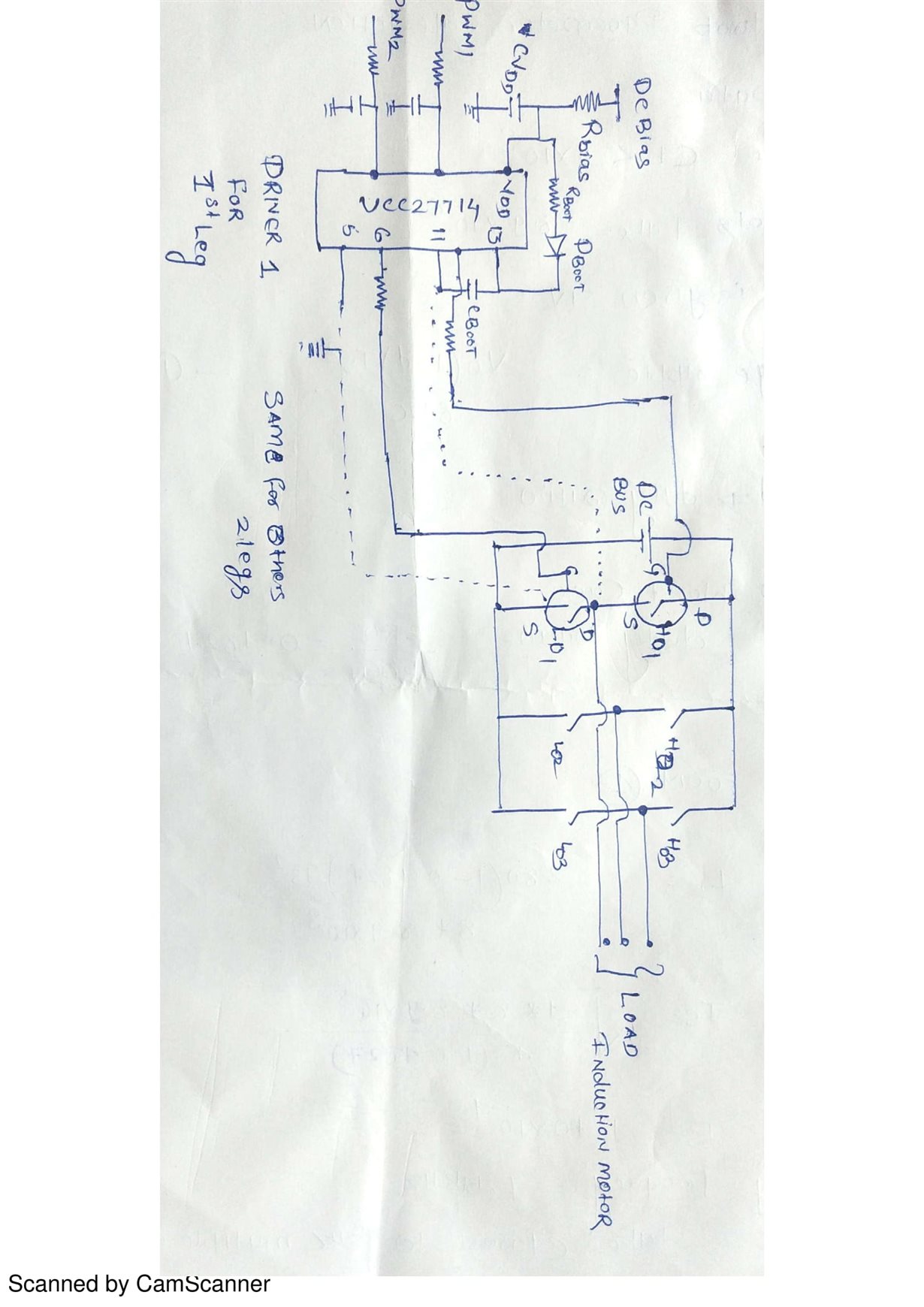Other Parts Discussed in Thread: UCC27712
Hi,
I am using UCC27714 driver circuit for my 6 switch INVERTER. When i tested it with simple 180 degree Square wave inverter with induction motor load it is working fine.
But when i am loading SPWM code with 2khz switching frequency it damages all the switches. I test the same code with other driver circuit it is working fine.
Please suggest me the solution. because it simply damage the switches at no load conditions also.
but for 180 degree square wave it is working fine for induction motor and others loads also. but for SPWM and SVPWM with 2 khz it is not working at all.
pwm pulses coming but after applying dc voltage it damages the switches.
I check the dead band also and from code side it is 3 micro second which fine according to switch







